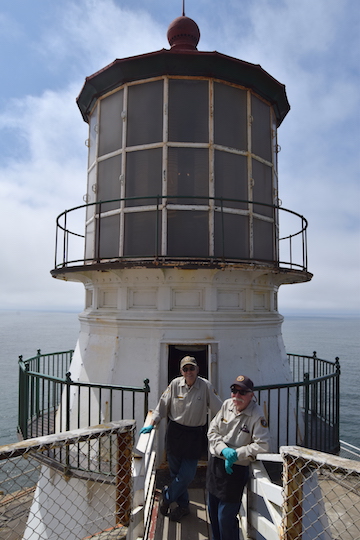
On April 18th I had the pleasure of visiting the Point Reyes Light Station in Point Reyes National Seashore located on the Pacific Coast 35 miles north of San Francisco. This special tour was part of the annual Council of American Maritime Museums conference hosted by the San Francisco Maritime National Historical Park. One of the highlights of the tour was seeing the first-order lens in situ. Volunteer Keepers Mike Warren and Bill Anderson were on hand to welcome us to the site, and we had the unusual priviledge of watching the lens rotate on its chariot wheels for several minutes.
Although funds were appropriated for a lighthouse at Point Reyes in 1854, disputes over title of the land dragged on for 15 years. In that period over three-quarters of a million dollars worth of ships and cargo was lost from shipwrecks on that point.
The Barbier & Fenestre apparatus was manufactured in Paris in 1867. It has been in the tower since the light was established in 1870. The lens was transferred from the U.S. Coast Guard to the National Park Service when the light was automated in the 1970s.
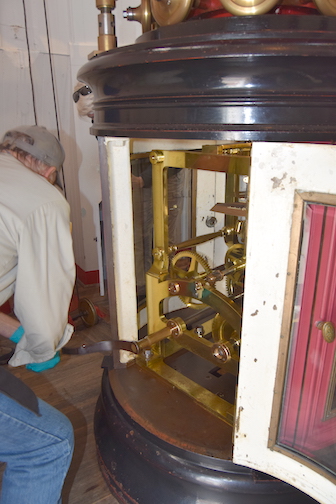
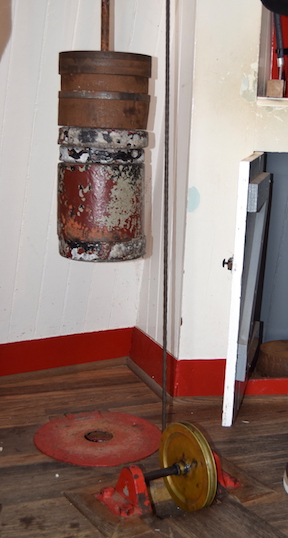
According to Carola DeRooy, Museum Program Manager for the Seashore, “The National Park Service has funded a multi-million dollar restoration project for the lighthouse, lens and clockworks, and fog signal building, as well as accessibility improvements and new exhibits at the entire site. We have been in the planning stages for 2 years and the work will be starting in the fall. The tower’s roof is being replaced, so the lens and clockworks have to be removed at the beginning of the project and conservation work done while it’s out.”
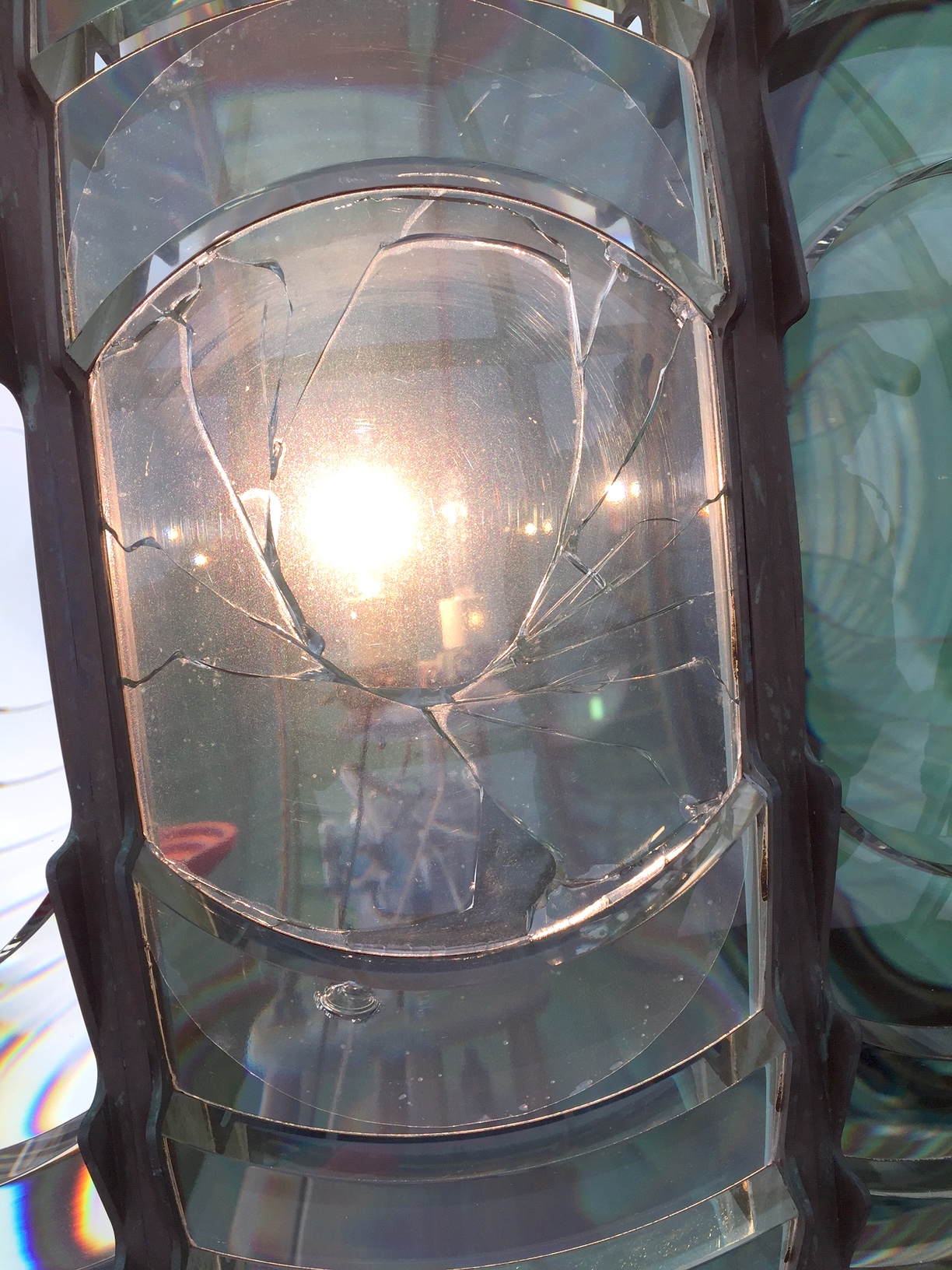
A complete condition assessment will be undertaken to see what additional repairs are necessary to the lens, chariot wheels, and clockwork. After the conservation is completed, the lens will be re-assembled as an interpretive display in the tower. It is hoped that the lens will be operated for paid “behind the scenes” tours that would help fund its maintenance.
Currently, the lighthouse stairs are open to the public Fridays through Mondays. See the park’s visitor information for details on times the lens room is open and links to more information.
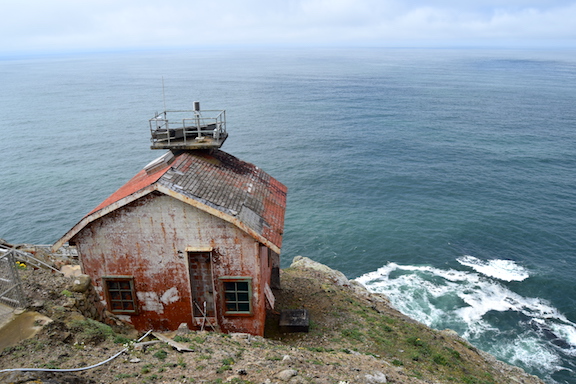
Submitted by U.S. Lighthouse Historian Candace Clifford, May 5, 2017.
* * * *
U.S. Lighthouse Society News is produced by the U.S. Lighthouse Society to support lighthouse preservation, history, education and research. Please consider joining the U.S. Lighthouse Society if you are not already a member. If you have items of interest to the lighthouse community and its supporters, please email them to candace@uslhs.org.

Candace was the US Lighthouse Society historian from 2016 until she passed away in August 2018. For 30 years, her work involved lighthouse history. She worked with the National Park Service and the Council of American Maritime Museums. She was a noted author and was considered the most knowledgable person on lighthouse information at the National Archives. Books by Candace Clifford include: Women who Kept the Lights: a History of Thirty-eight Female Lighthouse Keepers , Mind the Light Katie, and Maine Lighthouses, Documentation of their Past.


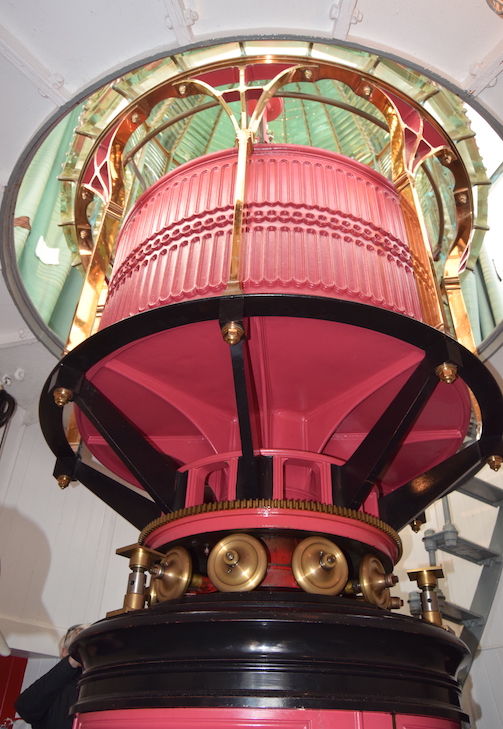
Thanks for a great bit of info. Just curious about the condition of the wheel track. Understand the track wears down rapidly
No wear on the wheel track that we have seen. The carriage wheels need to be replaced periodically, but I am not aware of any re surfacing or other maintenance having been done to the track. We clean the track above and below the wheels before we rotate the lens as well as wiping off the wheels and giving them a couple drops of oil to lubricate the track/wheel interface.
Very nice photos and article. I have shared it on my FB page. It was a pleasure to meet Candace and all the other curatorial folks. Cheers Mike Warren
Sent from my iPad
>